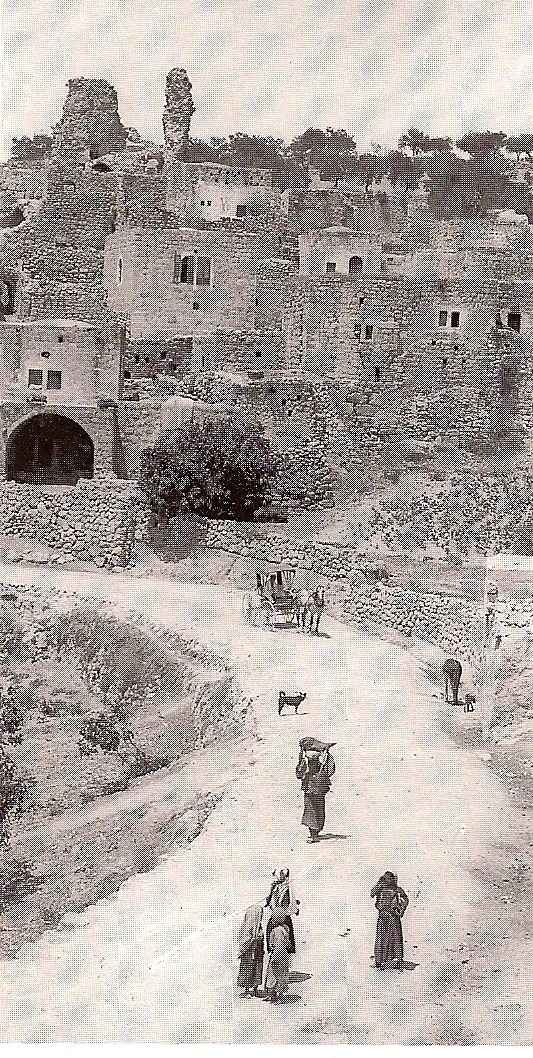|
Al-Eizariya
Bethany ( grc-gre, Βηθανία,Murphy-O'Connor, 2008, p152/ref> Syriac: ܒܝܬ ܥܢܝܐ ''Bēṯ ʿAnyā'') or what is locally known as Al-Eizariya or al-Azariya ( ar, العيزرية, " laceof Lazarus"), is a Palestinian town in the West Bank. The name al-Eizariya refers to the New Testament figure Lazarus of Bethany, who according to the Gospel of John, was raised from the dead by Jesus. The traditional site of the miracle, the Tomb of Lazarus, in the city is a place of pilgrimage. The town is located on the southeastern slope of the Mount of Olives, less than from Jerusalem. According to the Palestinian Central Bureau of Statistics, it is the second largest Palestinian city in the Jerusalem Governorate (not including East Jerusalem, which is under Israeli control), with a population of 17,606 inhabitants. Being mostly in Area C, it is controlled by the Israeli military rather than the Palestinian Authority. Name Al-Eizariya The name Al-Eizariya ( ar, العيزري ... [...More Info...] [...Related Items...] OR: [Wikipedia] [Google] [Baidu] |
Tomb Of Lazarus (al-Eizariya)
The Tomb of Lazarus is a traditional spot of pilgrimage located in the West Bank town of al-Eizariya, traditionally identified as the biblical village of Bethany, on the southeast slope of the Mount of Olives, some 2.4 km (1.5 miles) east of Jerusalem. The tomb is the purported site of a miracle recorded in the Gospel of John in which Jesus raised Lazarus from the dead. History The site, sacred to both Christians and Muslims, has been identified as the tomb of the gospel account since at least the 4th century AD. As the ''Catholic Encyclopedia'' of 1913 states, however, while it is "quite certain that the present village formed about the traditional tomb of Lazarus, which is in a cave in the village", the identification of this particular cave as the actual tomb of Lazarus is "merely possible; it has no strong intrinsic or extrinsic authority." Archeologists have established that the area was used as a cemetery in the 1st century AD, with tombs of this period found "a shor ... [...More Info...] [...Related Items...] OR: [Wikipedia] [Google] [Baidu] |
Ananiah
Ananiah, in the Bible, is a town in the tribe of Benjamin between Nob and Hazor (modern Tell el-Qedah) (). It is one of the localities inhabited by the tribe of Benjamin after the return from the Babylonian Exile. Ananiah, whose name means "protected by God," was identified by the 19th century French traveler V. Guérin, author of ''Description de La Jude'e'', with the present-day Beit Hanina, located 3 miles north of Jerusalem.Guérin, 1868, p394/ref> Edward Robinson concurred, but W.F. Albright maintained that Ananiah is the village of al-Eizariya east of Jerusalem Jerusalem (; he, יְרוּשָׁלַיִם ; ar, القُدس ) (combining the Biblical and common usage Arabic names); grc, Ἱερουσαλήμ/Ἰεροσόλυμα, Hierousalḗm/Hierosóluma; hy, Երուսաղեմ, Erusałēm. i .... Some modern scholars also identify Ananiah with al-Eizariya. References Bibliography * Hebrew Bible cities {{Tanakh-stub ... [...More Info...] [...Related Items...] OR: [Wikipedia] [Google] [Baidu] |
Mount Of Olives
The Mount of Olives or Mount Olivet ( he, הַר הַזֵּיתִים, Har ha-Zeitim; ar, جبل الزيتون, Jabal az-Zaytūn; both lit. 'Mount of Olives'; in Arabic also , , 'the Mountain') is a mountain ridge east of and adjacent to Jerusalem's Old City. It is named for the olive groves that once covered its slopes. The southern part of the mount was the Silwan necropolis, attributed to the elite of the ancient Kingdom of Judah. The mount has been used as a Jewish cemetery for over 3,000 years and holds approximately 150,000 graves, making it central in the tradition of Jewish cemeteries. Several key events in the life of Jesus, as related in the Gospels, took place on the Mount of Olives, and in the Acts of the Apostles it is described as the place from which Jesus ascended to heaven. Because of its association with both Jesus and Mary, the mount has been a site of Christian worship since ancient times and is today a major site of pilgrimage for Catholics, the Easter ... [...More Info...] [...Related Items...] OR: [Wikipedia] [Google] [Baidu] |
Raising Of Lazarus
Lazarus of Bethany (Latinised from Lazar, ultimately from Hebrew Eleazar, "God helped"), also venerated as Righteous Lazarus, the Four-Days Dead in the Eastern Orthodox Church, is the subject of a prominent sign of Jesus in the Gospel of John, in which Jesus restores him to life four days after his death. The Eastern Orthodox and Catholic traditions offer varying accounts of the later events of his life. In the context of the seven signs in the Gospel of John, the raising of Lazarus at Bethany – today the Palestinian town of Al-Eizariya in the West Bank, which translates to "the place of Lazarus" – is the climactic narrative: exemplifying the power of Jesus "over the last and most irresistible enemy of humanity: death. For this reason, it is given a prominent place in the gospel." The name ''Lazarus'' is frequently used in science and popular culture in reference to apparent restoration to life; for example, the scientific term Lazarus taxon denotes organisms that reappear ... [...More Info...] [...Related Items...] OR: [Wikipedia] [Google] [Baidu] |


